





| Southern Darter (Sympetrum meridionale (Selys, 1841)) |






|
|
Scientific name: Sympetrum meridionale (Selys, 1841) Common name: Southern Darter French name: Sympétrum méridional Order: Odonata Suborder: Anisoptera Family: Libellulidae Wingspan: 55-60 mm. Biotope: Stagnant and shallow water. Geographic area: France , Italy, the Balkans, Greece. North Africa, Central Asia. In spite of its name, the Southern Darter's range almost includes all the French regions. Flight time: Early June to mid-October, slightly larger period in North Africa. |
The Southern Darter has very few black marks. The male's body is red, without black marks on S8 and S9. The female's body is yellowish. The black mark at the base of the forehead is very thin and almost disappears under the vertex. The sides of the thorax only show two thin black lines, more visible near the base of the wings. The legs are mostly yellow. The upper side of the thorax shows a pale patch. You can find the Desert Darter (Sympetrum sinaiticum), in Spain or in North Africa. You can tell it apart with the black mark located on the sides of S2 and S3. You can also find the Plain Darter (Sympetrum decoloratum), in Turkey, which has almost no black mark and the Dwarf Darter (Sympetrum haritonovi) which, as indicated by its common name, is much smaller. There is also a possible confusion with some members of the Orthetrum genus like the Keeled Skimmer. The members of the Orthetrum genus show a larger number of antenodal veins (small transverse veins on the costal edge between base and nodus), that's to say respectively more than 8 and more than 6 on the fore wings and on the hind wings while Sympetrum species show 6 to 8 and 5 to 6. |
| [To know more about the Southern Darter] [Next picture] [Top] |
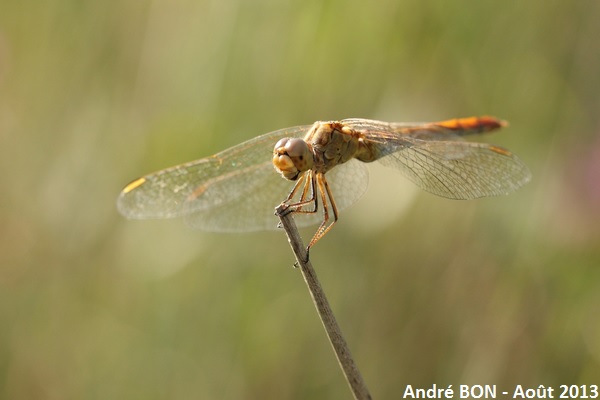
|
The low number of antenodal veins is the criteria to discard the Orthetrum genus and so to confirm the Sympetrum genus. The reduced black marking at the base of the forehead and on the lateral sides of the thorax indicate the Southern darter species. |
| [To know more about the Southern Darter] [Next picture] [Previous picture] [Top] |
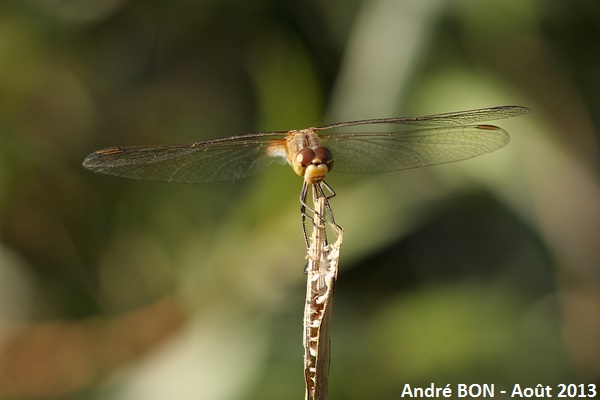
|
Front view. |
| [To know more about the Southern Darter] [Next picture] [Previous picture] [Top] |
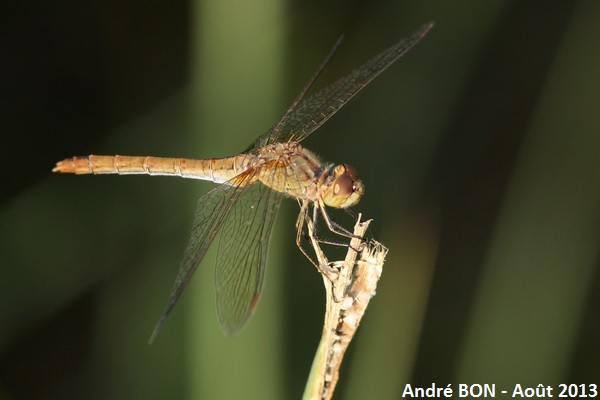
|
The yellowish body indicate one female. There are very few black markings. |
| [To know more about the Southern Darter] [Next picture] [Previous picture] [Top] |

|
Very yellow legs, almost no black under the vertex, very fine black bands on the thorax, we have here a Southern Darter. |
| [To know more about the Southern Darter] [Next picture] [Previous picture] [Top] |
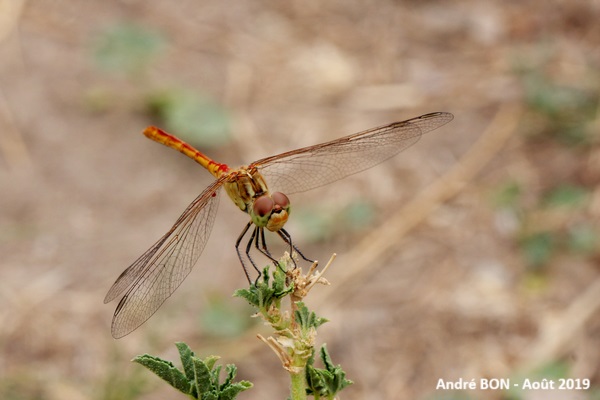
|
A red mite is attached to the right wing of this specimen. I have read that the presence of red mites is very common for this species. |
| [To know more about the Southern Darter] [Previous picture] [Top] |
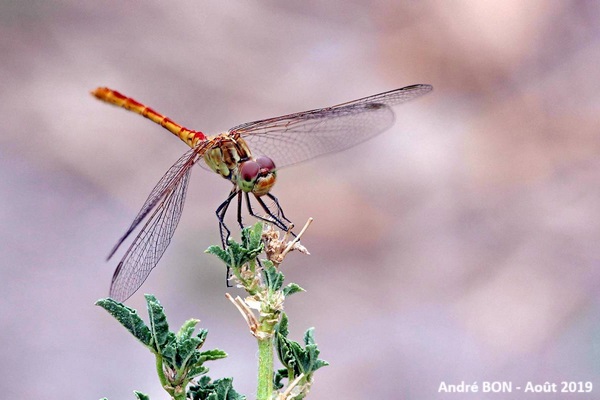
|
I wasn't quite sure anymore, but the red mite at the same place on the right wing confirms that it is the same specimen as in the previous photo. |